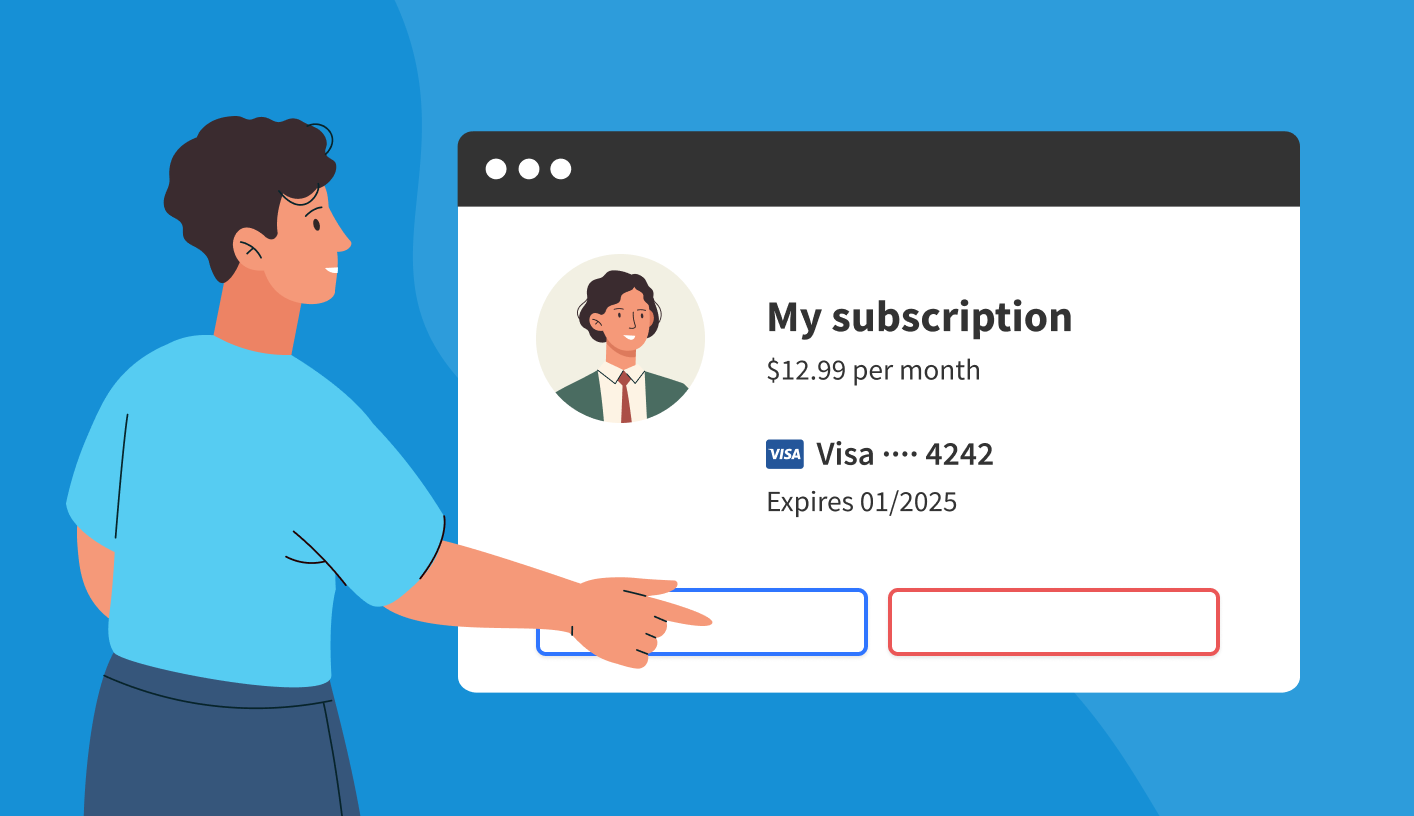Willingness to Pay - How to Measure and Improve

In SaaS, willingness to pay (WTP) refers to the maximum amount customers are willing to pay for a product or service. It is often expressed as a dollar range.
The main purpose of WTP is to guide pricing strategy, but it can influence other business decisions as well.
Why willingness to pay matters
WTP serves two primary business objectives:
Pricing strategy - Most obviously, willingness to pay can guide your pricing strategy.
Product development - Willingness to pay is a factor in assessing the market demand for new products or features and can guide decisions about what is worth investing in.
Determining willingness to pay
While there’s no simple willingness to pay formula, there are a variety of methods to estimate this important metric.
The Van Westendorp price sensitivity meter
The Van Westendorp method is a commonly used and relatively simple market research technique for gauging consumer price sensitivity.
Developed in the 1970s, the method involves conducting a survey of a sample of your target market. Survey respondents are asked four questions to identify the price at which a product or service is:
Too expensive, would not buy
Expensive, but would consider
Cheap, a bargain
Too cheap, would doubt its quality

Analysis from the survey reveals the range of prices that potential customers consider acceptable. When the data is plotted on a graph, it creates four intersection points of interest:
the point of marginal expensiveness - the highest acceptable price; above this price you will lose customers (“too expensive” and “bargain” curves intersect)
the point of marginal cheapness - the lowest acceptable price
the optimal price point - the price at which few customers would reject it for being too cheap or too expensive (not optimal from a revenue maximization perspective)
the “indifference” price point - the point at which the greatest number of respondents think the product is neither too cheap nor too expensive
See a more in-depth explanation.
The results of this method are only as good as the quality of the respondents. Start your survey with a screening question to filter out respondents who aren't in your target market.
Flaws
The Van Westendorp method has a number of potential flaws. Two prominent problems are:
Hypothetical bias - The survey method relies on what people think they would be willing to pay in a hypothetical situation. This bias can result in subjects believing they would pay much more or less than they might in reality.
It does not account for contextual factors - This method does not account for other factors that influence consumers' willingness to pay, like what other products are available, brand loyalty or social pressure.
In summary, the Van Westendorp method is used to determine an acceptable range of prices based on customer attitudes, thus helping businesses identify optimal pricing. However, the Van Westendorp is not the be-all and end-all of pricing research. It should be used in conjunction with other methods to inform pricing strategy.
Alternatives to the Van Westendorp
There are a number of alternatives to the Van Westendorp method, including:
Becker-DeGroot-Marschak (BDM)
The Becker-DeGroot-Marschak method overcomes the hypothetical bias of the Van Westendorp by utilizing an auction-style mechanism. Participants are asked for the maximum price they'd be willing to pay; then a random number is drawn and the participant must buy the product at that price if it is less than their given number. In essence, participants have “skin in the game,” which improves the quality of their judgments.
The main drawback of this method is it assumes people are comfortable and ready to “name their own price” for a given product, when in reality consumers are more used to being shown the price and either taking or leaving it.
Gabor-Granger multiple price list
The Gabor-Granger is similar to the BDM but attempts to solve the “name your price” problem. Instead of being asked for a maximum price, consumers are given a list of prices and respond “yes” or “no” to each.
Discrete-choice-based
This is another survey method, but unlike those above, it asks potential customers to choose between competing products. This more closely reflects the real world, where customers are evaluating willingness to pay relative to what other options are available, not as an absolute.

How to increase willingness to pay
The good news is willingness to pay isn’t fixed. Many factors influence WTP, including product description, features and what it's compared to—giving you many levers to pull. These can be broadly categorized into love, utility and coercion buckets.
Build a brand customers love
When customers feel connected to your brand, they're more than just customers. They root for your success, spread positive word of mouth, and pay no attention to the competition, regardless of how good the alternatives might be.
Refine your value proposition
At its core, willingness to pay is about human perception of value. If you customer buys into your value proposition, believing it will effectively solve their problem, they’ll be happy to pay for it.
Is your value proposition the best it can be? Investing time here can really pay off. Make sure you're communicating the benefits and unique value of your product in a concise, memorable and compelling way.
Leverage social proof
People are naturally influenced by social factors when making decisions, like which product to buy. Case studies, customer testimonials, celebrity endorsements and influencer marketing can all have a positive effect on WTP.
Bridge the gap with your cancellation flow
Willingness to pay is a valuable metric in determining your pricing strategy, but there will always be customers whose willingness to pay is lower than your standard pricing. Instead of letting those customers churn, meet them halfway with a price that better fits their WTP. Your cancellation experience offers this opportunity.

ProsperStack Retain makes it easy to launch cancellation flows with targeted discounts that save more customers. We consistently help high-volume subscription brands reduce churn by 10 to 39%. Get a demo.


